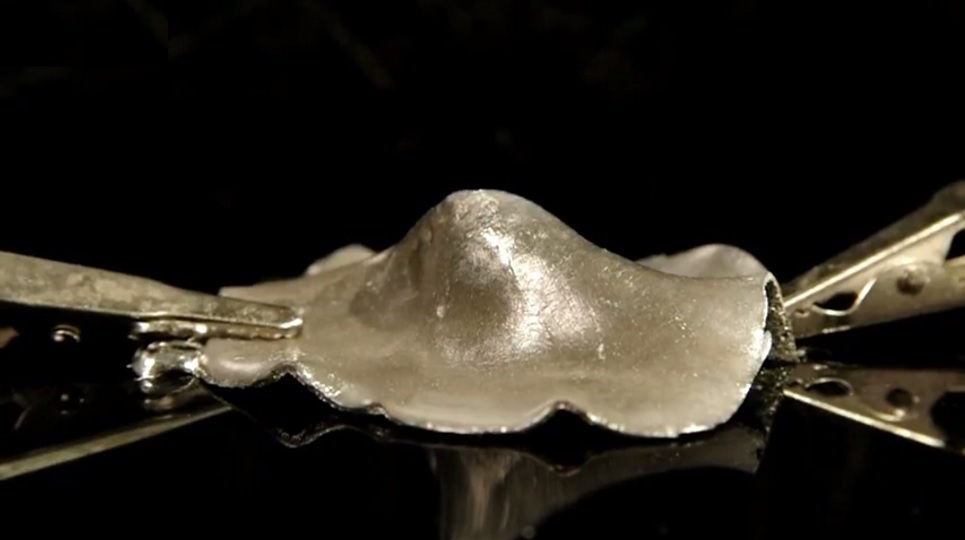Engineers at Carnegie Mellon University have developed an intelligent, shape-morphing, self-healing stretchable material for soft robotics.
The field of soft robotics has enjoyed a lot of attention lately. From the Origami-inspired rollbot in Japan to the miniature stretchable pump in France, this field appears to be continually innovating.
Well, now you can add one more to the list.
In an article published in PNAS, researchers at CMU reported an intelligent new material that can change its shape in response to the environment. Furthermore, the stretchable material exhibits a high electrical and thermal conductivity, as well as actuation capabilities, unlike any previous soft composite.
In a statement to the press, the associate professor of mechanical engineering at the Soft Machines Lab in CMU, Carmel Majidi said:
“It is not only thermally and electrically conductive, but it is also intelligent. Just like humans recoil when touching something hot or sharp, the material senses, processes, and responds to its environment without any external hardware.”
The neural-like electrical pathways in the new material brings the soft robotics field one step closer to artificial nervous tissues, says the researcher.
Creating an Intelligent Stretchable Material From LCEs
Majidi and his team had been developing new classes of material for soft robotics for a while.
Some of their previous works include creating advanced material architectures from deformable liquid metal micro- and nano-droplets of gallium indium. But they were only able to combine the technique with liquid crystal elastomers (LCEs) recently.
What are LCEs?
Think of LCEs as liquid crystals used in flat panel displays, except they’re linked like rubber. They move on exposure to heat, and as a result, could make a promising shape-morphing material.
The drawback is their lack of the electrical and thermal conductivity required for shape memory activation.
To address this challenge, the researchers combined liquid metal gallium indium with the LCEs. The result is a soft, stretchable material unlike any we’ve ever seen.
Along with its resilience, the soft composite also has an unprecedented response to damage.
Postdoctoral research associate in the Soft Machines Lab and the lead author of the study, Michael Ford explained:
“We observed both electrical self-healing and damage detection capabilities for this composite, but the damage detection went one step further than previous liquid metal composites. Since the damage creates new conductive traces that can activate shape-morphing, the composite uniquely responds to damage.”
Aside from soft robotics, the new material can be useful in any field that requires stretchable electronics. These include clothing, healthcare, wearable computing, space travel, among others.



















Comments (0)
Most Recent